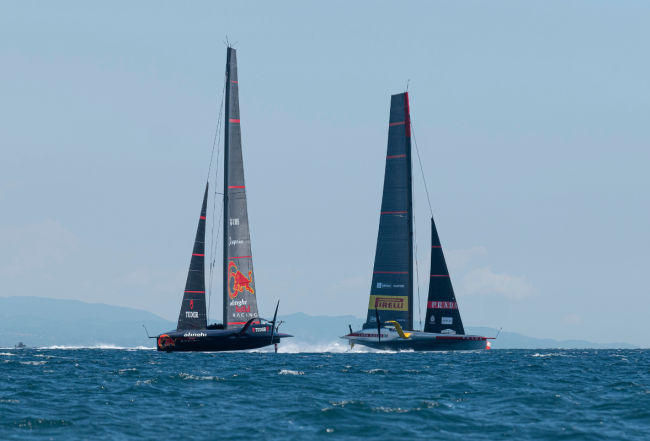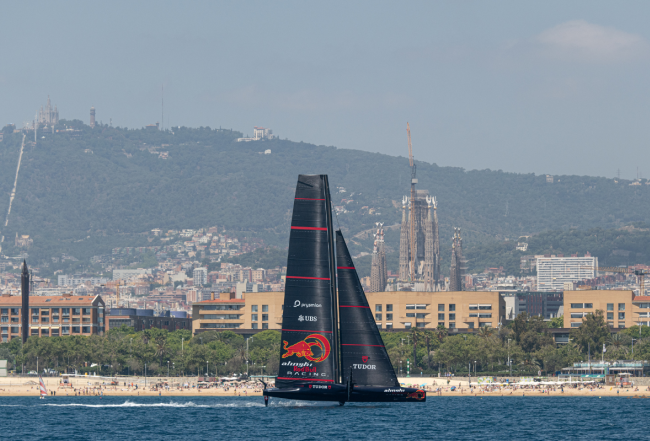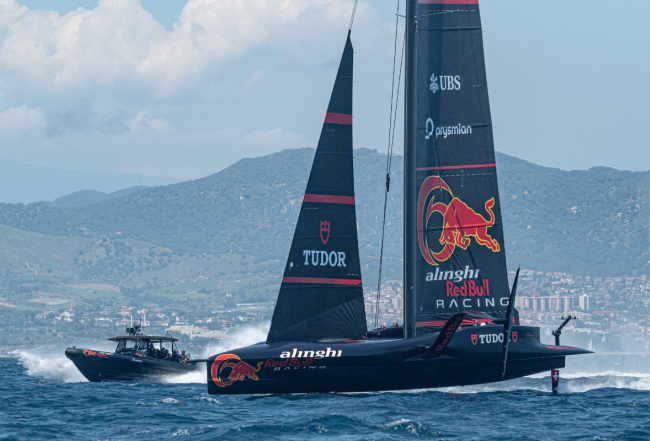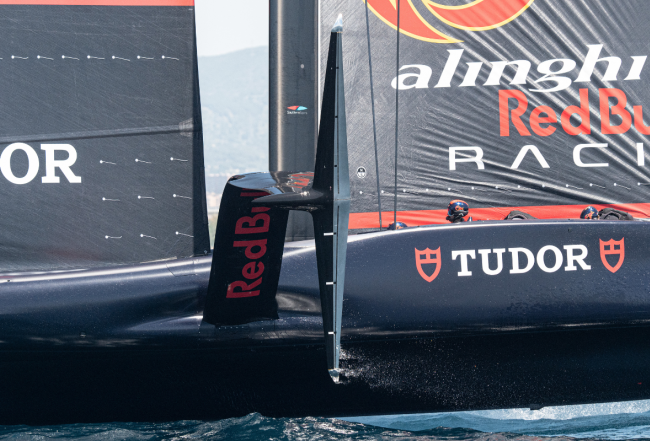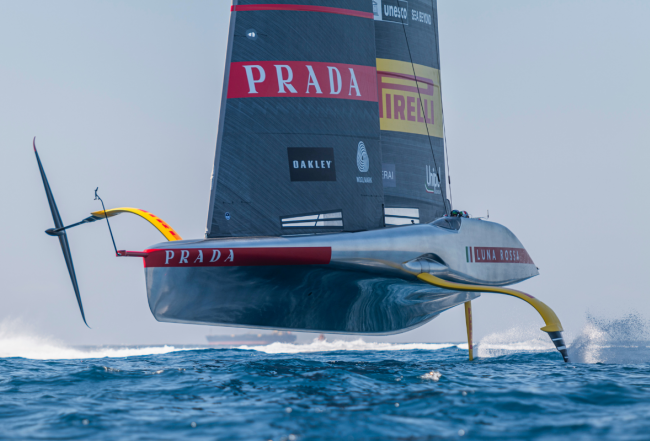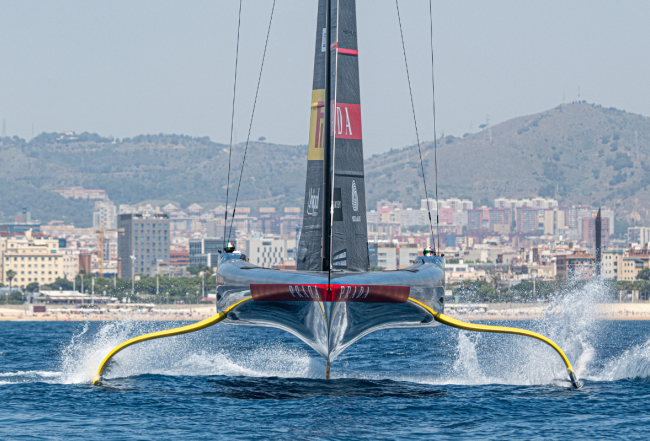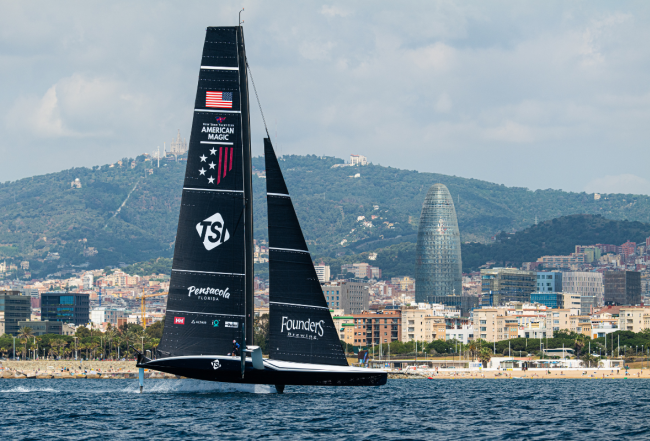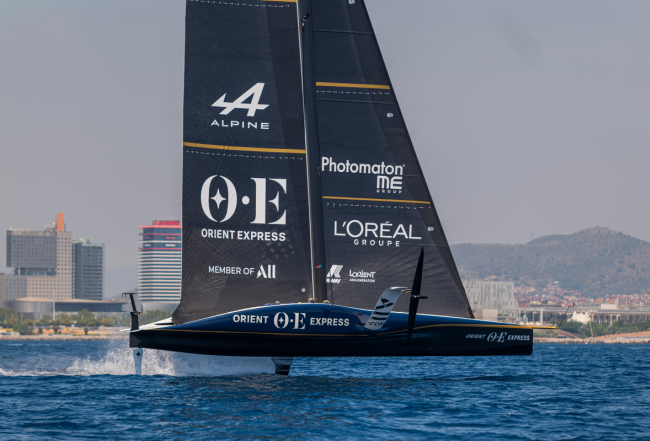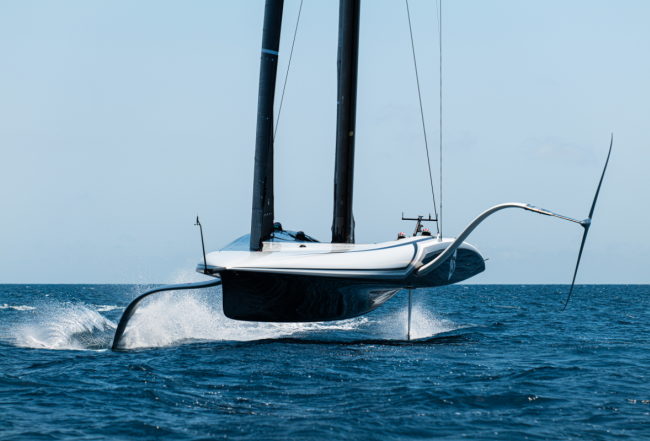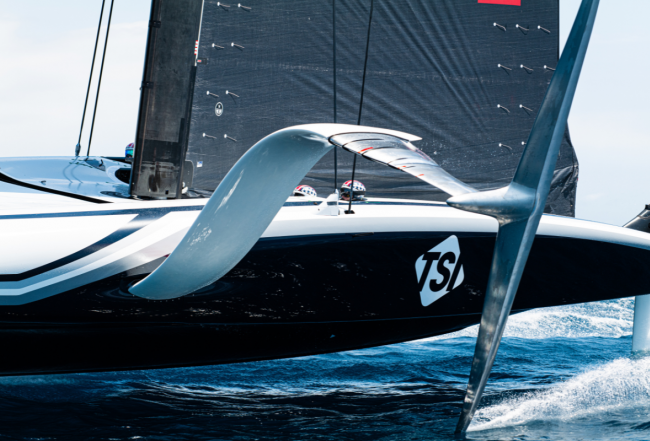Spies Like Us: Inside the 37th America's Cup in Barcelona
Hordes of avid sailing fans will converge on Barcelona in the late summer of this year to witness the 37th edition of the America’s Cup – yachting’s oldest and most prestigious sporting competition, which is being staged in Europe for the first time in 14 years.
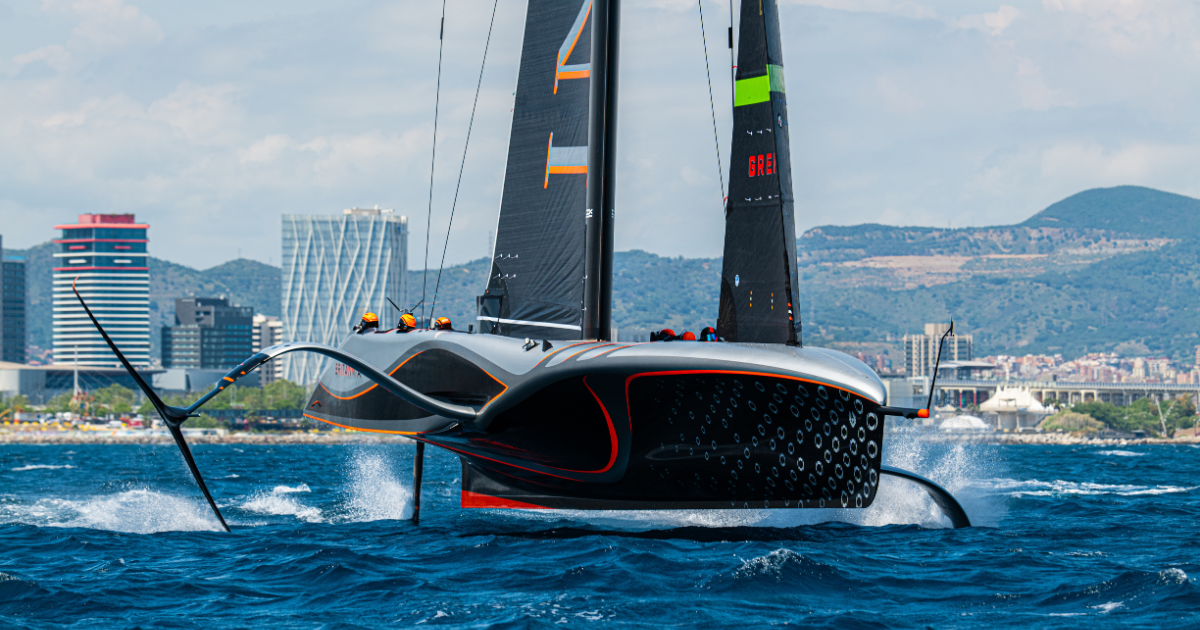
Tens of thousands of spectators from across continental Europe and the rest of the world are expected to boost the Catalan capital's tourist numbers for the two month regatta which will see professional teams from New Zealand, Great Britain, Italy, the United States, Switzerland, and France. made up of the world’s best professional sailors, go head to head in multi-million-dollar custom-built ultra-high-performance flying yachts.
British sailing writer Justin Chisholm has reported on the last five cycles of the America’s Cup, but was given a unique ringside seat to witness the build up to this latest edition.
International sport’s oldest competition
The America’s Cup is the oldest trophy in international sport and predates the modern Olympics by some 45 years. It dates back to 1851 when a 100-foot (30-metre) schooner named America representing the New York Yacht Club defeated a fleet of the best English yachts of that time in a one lap race around the Isle of Wight run by the British Royal Yacht Squadron.
The trophy itself – a 27-inch solid silver ewer – was originally known as the £100 Cup. But, in 1857 it was renamed the America’s Cup by the winning yacht’s owners’ syndicate, who bequeathed it to the New York Yacht Club to be awarded to the winner of a new international challenge event open to yacht clubs around the world.
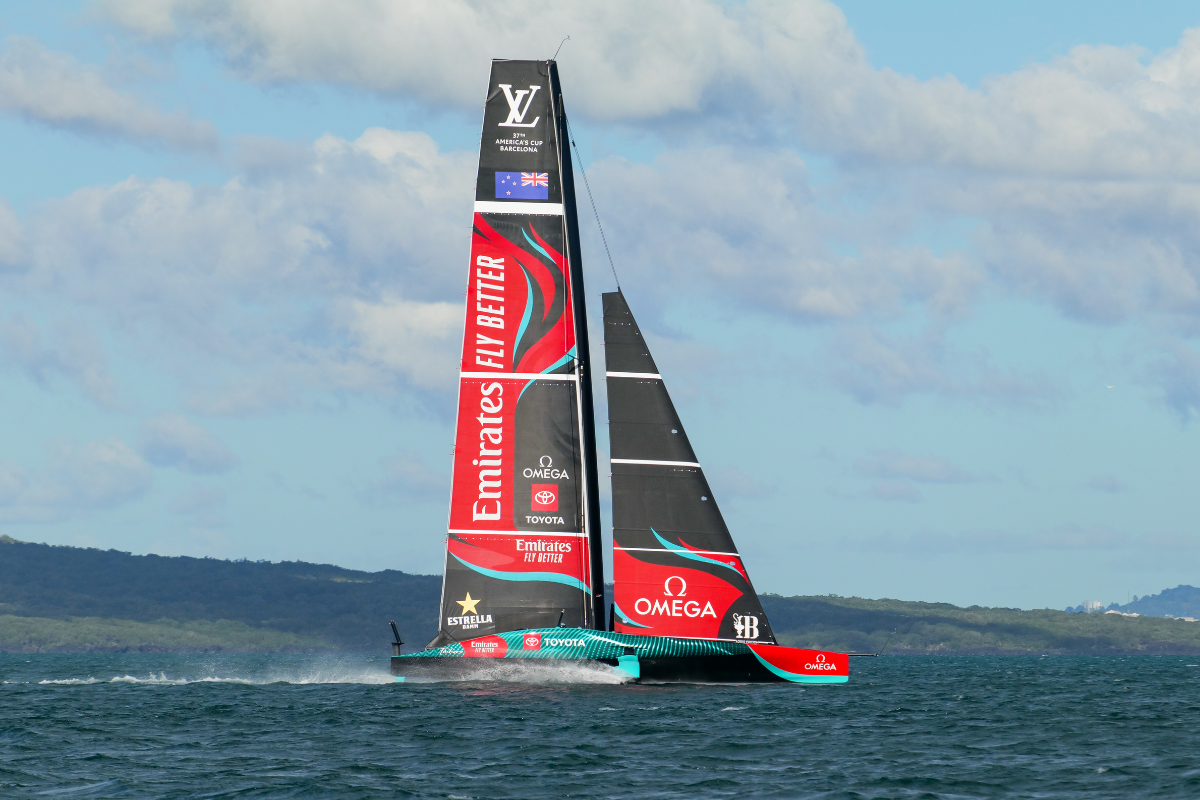
Over its 137-year history the America’s Cup has evolved into the undisputed pinnacle of professional sailing. Mounting an America’s Cup challenge requires large amounts of money, talent, and technical expertise and the modern era teams are typically billionaire-backed 100 – 150-million-dollar operations, with headcounts of 150 or more specialist staff.
Under the unique set of rules that have governed the ancient event since its inception, whoever wins the America’s Cup chooses the venue and class of boat for the next edition.
Normally, of course, the winner opts to take the event back to their home country. That’s what Emirates Team New Zealand did when they won in Bermuda in 2017, but, after successfully defending the Cup in 2021, primarily for commercial reasons, the Kiwis instead chose Barcelona as the host city for the thirty-seventh edition.
10 weeks of on-the-water action
The last time the America’s Cup was held in Europe was in 2010 when the thirty-third edition took place in Valencia, Spain. Now, with the event’s European fanbase salivating at the chance to watch an America’s Cup live for the first time in 14 years, it is no surprise that the Barcelona authorities are expecting huge crowds throughout the 10-week yachting extravaganza.
The America’s Cup is a match racing competition which pitches two teams at a time against each other around an inshore race course in a typically 20-minute race. The racing actually begins before the starting gun with the boats allowed to manoeuvre against each other in the starting box in the final three minutes to the start. The points system is simple: one point for a win and nothing for a loss.
The action officially gets underway on August 22 with a three-day preliminary regatta between the ‘Defender’: Emirates Team New Zealand (NZL), and the ‘Challengers’: INEOS Britannia (GBR); Alinghi Red Bull Racing (SUI); NYYC American Magic (USA); Luna Rossa Prada Pirelli (ITA); and Orient Express Racing Team (FRA).
Although this opening series is purely an exhibition event, for America’s Cup fans it will be the first opportunity to see the teams go head-to-head on the water and have the chance to assess which of the crews and their individually-designed yachts looks strong or weak.
The real action starts on August 29 when the five Challenger teams begin the Louis Vuitton Challenger Series – a five-week elimination competition to determine which of them will take on the Defender in the 37th America’s Cup Match. The challenger series is made up of two four-day blocks of round robin racing before, followed by a five-day semi-final, and a seven-day grand final.
The triumphant winning Challenger will have little time to celebrate their victory, however, as they have just six days until racing begins in the 37th America’s Cup Match – a seven-day, first-to-seven-points series against the America’s Cup holders Emirates Team New Zealand.
Interwoven with the main series will be two separate fleet racing competitions raced in the smaller AC40s: the UniCredit Youth America’s Cup and the inaugural Puig Women’s America’s Cup. With 12 international entries apiece, these are both major events in their own right and are expected to be as hotly contested as the main America’s Cup itself.
The fastest boat always wins
The 37th America’s Cup is the second consecutive time that racing has been conducted using AC75 Class foiling monohull yachts that fly above the water supported precariously only by a single hydrofoil arm and a t-foil rudder. The class was conceived by the design department at Emirates Team New Zealand after the Kiwis won the thirty-fifth America’s Cup in 2017 in Bermuda. Changes to the AC75 design rule for this year’s event mean the boats will be lighter and more powerful, with a crew of eight rather than 11 sailors.
Even from its earliest origins the America’s Cup has always been a design-led competition and there is a well-known truism in Cup circles that asserts that the team with the fastest boat always wins. Given that AC75s spend most of their time above the water than in it while racing, it’s unsurprising then that America’s Cup teams are jam packed with expert technical and design staff with top level experience not only in hydrodynamics and naval architecture but in non-traditional disciplines such as aerodynamics, mechatronics, and fibre optics.
Rather than tank testing or building prototypes, America's Cup yachts these days are designed and modelled on powerful computers. That’s an approach pioneered and perfected by the high budget syndicates of Formula 1 – a fact not lost on the British, Swiss, and French syndicates who have forged close partnerships with Mercedes, Red Bull Racing, and Alpine respectively.
Although the teams are only allowed to build one full size AC75 race boat, they can train and test components using smaller scaled-down foiling boats: either the official AC40 one-design or their own 40-foot / 12-metre test boats – known in America’s Cup parlance as LEQ12s (standing for Less or EQual to 12 metres).
There used to be an adage in sailing that when preparing for a regatta ‘nothing beats time on the water’. Recent editions of the America’s Cup have rendered that redundant, however, with the sailors able to hone their sailing skills on dry land using highly sophisticated simulators – in the same way that aircraft pilots do.
Spies like us
Over my 25 years as a sailing writer I have reported on each of the last five editions of the America’s Cup – and each cycle has followed a predictable pattern. America’s Cup teams are notoriously protective of their intellectual property and keep their cards very close to their chests in the years leading up to the actual event. That said, each of them is desperate for inside information on what their rivals are up to and none of them are above resorting to espionage to get it.
For the 37th America’s Cup, however, spying by individual teams has been outlawed, and replaced with a new central programme of ‘shared reconnaissance’. Instead of each syndicate dispatching personnel armed with huge telephoto lenses and video cameras to their competitors’ bases around the world, the America’s Cup organisers have instead hired an ‘in house’ reconnaissance team to do the job cheaper and more effectively.
Under this new arrangement each team is allocated an independent on-the-water ‘recon’ unit made up of an expert photographer / videographer and an driver / observer whose job it is to photograph, film, and report on everything that happens each and every time the teams go afloat.
The teams are required to supply a power boat capable of keeping up with the latest generation of foiling monohulls which fly above the water and can top 50 knots (58 miles per hour / 93 kilometres per hour) in less than 10 knots of breeze. Footage, photos, and a daily report are uploaded each night to a central server with secure access for each of the teams.
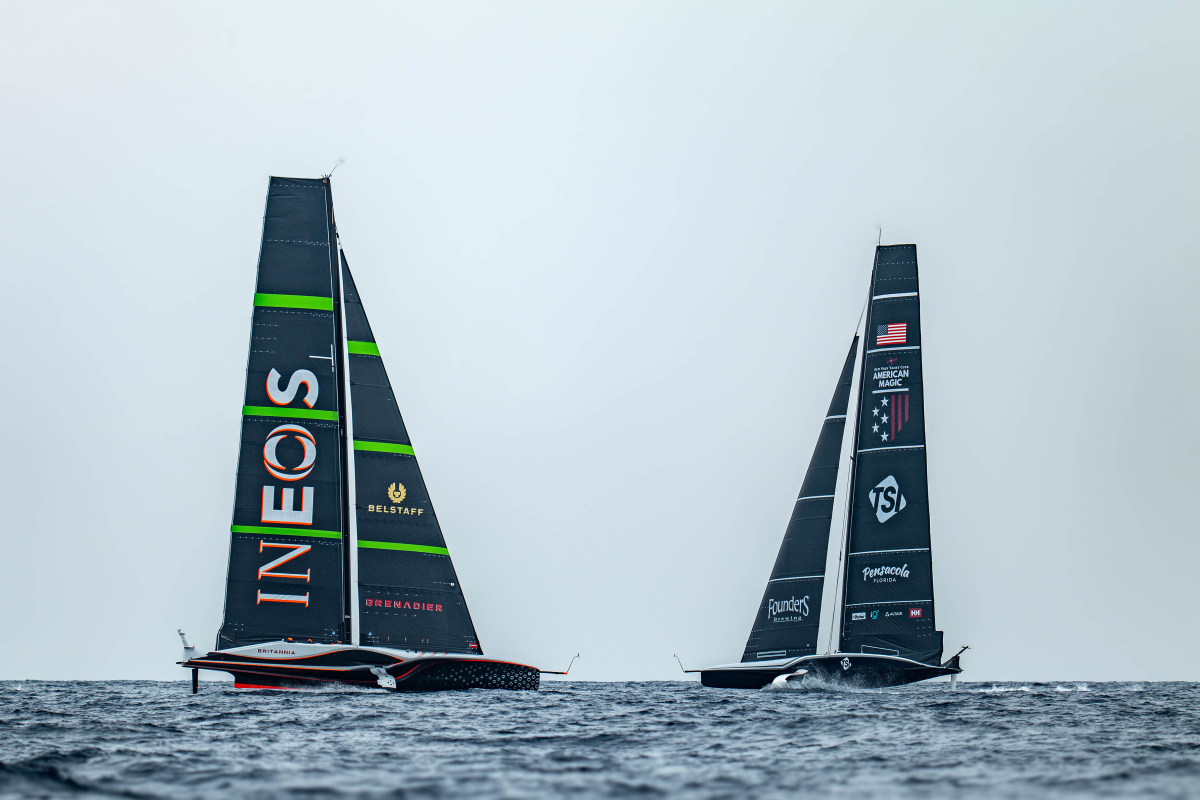
I have been lucky enough to work as a driver / observer for this latest America’s Cup cycle – a privileged role that has allowed me an unprecedented fly-on-the-wall perspective on the inner workings of the teams throughout every twist and turn of their campaigns. Although immensely rewarding, it’s a role that is not without its challenges – not least driving at speed at close quarters (we are allowed within 50-metres / 164-feet) of the yachts while trying to take mental notes on the intricacies of how the crew are sailing the boats.
My issues, however, pale into insignificance next to those of my recon partner, the renowned Spanish videographer and photographer Ugo Fonollá. Ugo and I first met during the 2017-18 Volvo Ocean Race around the world when he was the onboard reporter aboard the Spanish entry Desafio MAPFRE. His experience of capturing onboard action in the wilds of the world’s oceans is perhaps why he always manages to capture stunning images and footage even when being bounced around on rough seas aboard our 10 metre / 33-foot RIB.
For Ugo and I, our recon work began in October 2022, when we were assigned to the British INEOS Britannia team who had set up a winter training camp in Palma on the Mediterranean island of Mallorca. In August 2023 when the British team decamped less than 200 miles north to their new base in Barcelona we made the move to the mainland with them. Since then we have been assigned to the America’s Cup holders Emirates Team New Zealand, as well as the US challenger NYYC American Magic, as well as Switzerland’s Alinghi Red Bull Racing, and France’s Orient Express Racing Team. 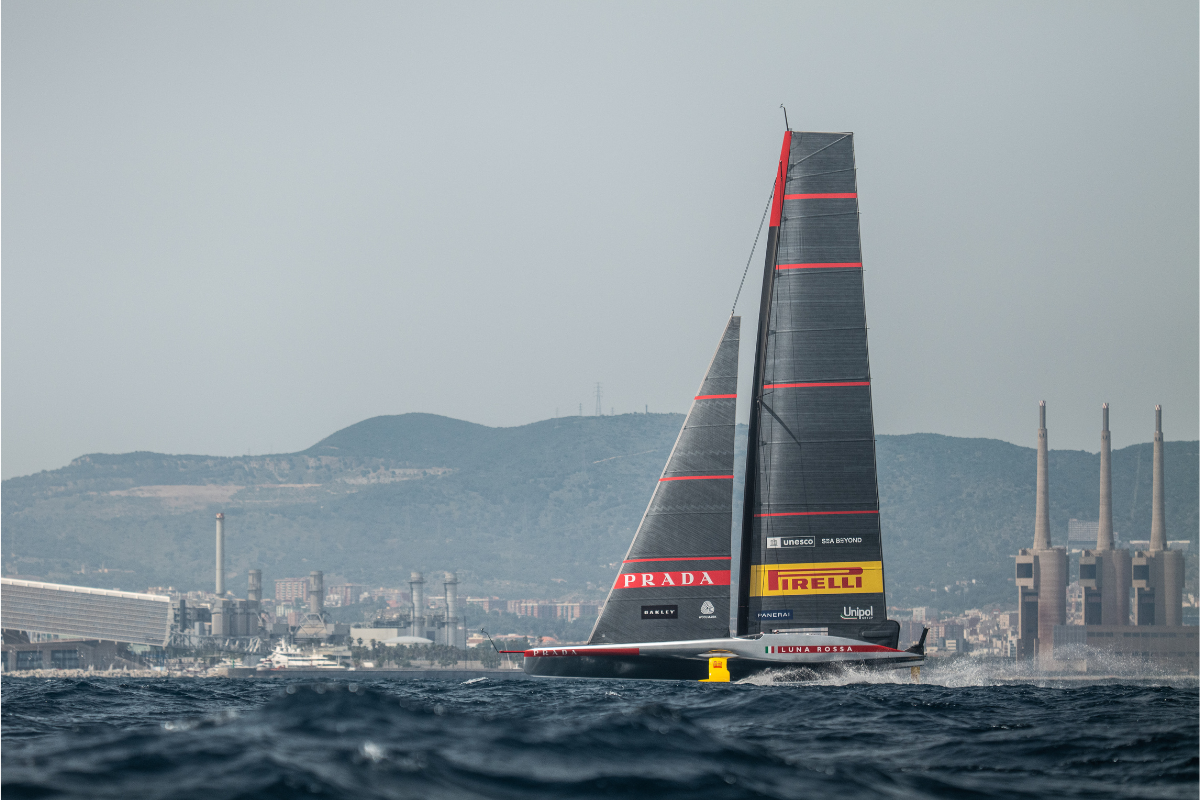
What we have found is that, although the teams all have different team cultures based on their nationalities, in many ways they are all very similar.
The consistent factor is that they are all 100 percent committed to winning the America’s Cup – and that commitment drives a work ethic that is centred around extreme excellence and ruthless efficiency across every aspect of all the campaigns. Working for an America’s Cup team may seem like a glamorous occupation, but, as I have witnessed, excellence and efficiency comes only through complete dedication and tirelessly hard work. The schedule is relentless, the days are predominantly long and early starts and late finishes are the norm.
Finally, what we have all been waiting for
When the much anticipated 37th America’s Cup officially gets underway in Barcelona on August 22 it’s likely to set the sailing world alight. Tens of thousands of people are expected to be watching on the water and along the Barcelona waterfront, with millions more tuning in on TV and online.
It’s worth remembering, though, that for the competing teams this milestone is just one of many along the long and tortuous road they have been on for the last three years or more as they strive to design, build, and develop a boat fast enough to win sailing’s holy grail.
Who will emerge victorious is impossible to call before racing begins, but many experts believe that this latest edition of the America’s Cup could be the most spectacular and hardest fought in the event’s long and storied history.
I will be watching closely, and if you have the chance to experience it first hand for yourself, I thoroughly recommend that you do so.
Images courtesy of America's Cup, credits from top:
INEOS Britannia - Ugo Fonollá; Emirates Team New Zealand © Sam Thom; Alinghi Red Bull Racing & Luna Rossa Prada Pirelli - Job Vermeulen; 4-5 Alinghi Red Bull Racing - Ivo Rovira; Luna Rossa Prada Pirelli - Job Vermeulen; Luna Rossa Prada Pirelli - Ivo Rovira; NYYC American Magic - Ugo Fonollá; Orient Express Racing Team - Job Vermeulen; 10-11 NYYC American Magic - Ugo Fonollá; INEOS Britannia & NYYC American Magic - Paul Todd; Luna Rossa Prada Pirelli - Alex Carabi.

